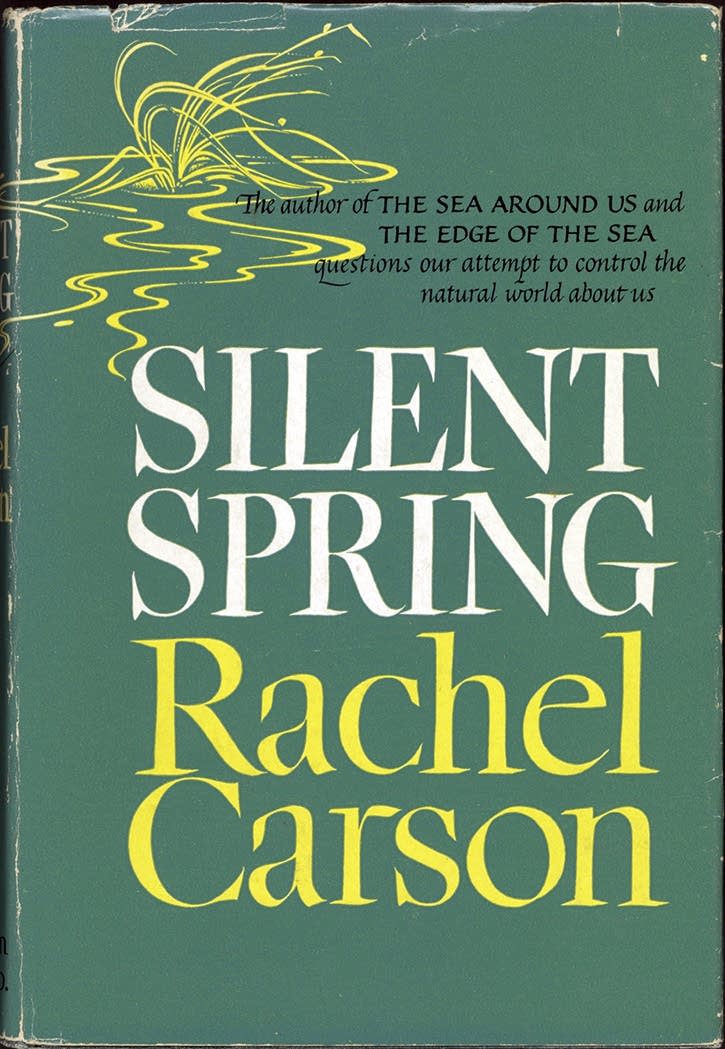Silent Spring was officially published on June 30, 1962, after being serialized in The New Yorker.

Silent Spring, 1962, Houghton Mifflin

"If we are going to live so intimately with these chemicals eating and drinking them, taking them into the very marrow of our bones - we had better know something about their nature and their power.”
~ Rachel Carson, Silent Spring
Silent Spring was officially published on June 30, 1962, after being serialized in The New Yorker.

Silent Spring, 1962, Houghton Mifflin

A serialization of Silent Spring in The New Yorker, 1962, The New Yorker
Carson argued that because of increasing pesticide use, insects would become resistant to pesticides (Darwin's Principle).
"Carson fully understood that ultimately this strategy was going to fail, and the farmer would be in the position of either needing a different pesticide or using more and more and more. And so then you have a kind of arms race of pesticide use. You use more pesticides, insects become more resistant, more resistance, more pesticides, more resistance. Now you’re trapped in an escalating cycle, and it’s a damaging cycle because meanwhile you’re also killing fish and birds and other things that you like and that you want."
~ Naomi Oreskes, science historian
Pesticide resistance overview, 2018, Malaria Genomic Epidemiology Network

How DDT affects the food chain for sealife, 1992, “DDT and Other Insecticides in the Lake Kariba Ecosystem, Zimbabwe”
The book explains that pesticides kill animals so quickly because of food chains. Take the elm leaf, earthworm, and robin food chain. If the elm leaf gets contaminated by pesticides, then the earthworm and robin get poisoned too. Eventually, all the organisms in the food chain will die.
"One of the most sinister features of DDT and related chemicals is the way they are passed on from one organism to another through all the links of the food chains."
~ Rachel Carson, Silent Spring
The thalidomide drug scare, which occurred right before Silent Spring's publication, helped prepare the public to accept Carson's message. Thalidomide was supposed to prevent morning sickness but instead caused birth deformities. Combined with Carson’s comparisons between radiation after World War 2 and pesticides, the public was concerned about the effects of chemicals.
"We are rightly appalled by the genetic effects of radiation; how then, can we be indifferent to the same effect in chemicals that we disseminate widely in our environment?"
~ Rachel Carson, Silent Spring